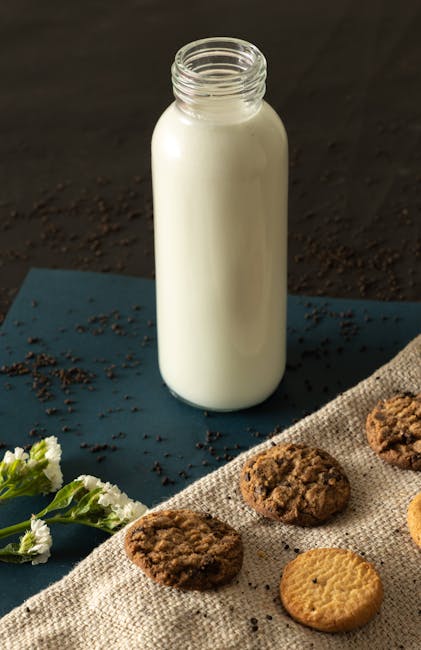Introduction
Craving a fluffy, moist, and utterly delicious American muffin? Look no further! This guide provides a comprehensive roadmap to baking the best muffins you’ve ever tasted. From mastering essential techniques to exploring exciting flavor combinations, we’ll cover everything you need to know to become a muffin-making maestro. Get ready to impress your family and friends with bakery-worthy results, right from your own kitchen.
Mastering the Muffin Basics
Essential Ingredients for Muffin Magic
The foundation of any great muffin lies in the quality and proper handling of its ingredients. Here’s a breakdown:
- Flour: All-purpose flour is the standard, but you can experiment with whole wheat flour for a nuttier flavor and added fiber. Don’t overmix!
- Sugar: Granulated sugar provides sweetness and structure. Brown sugar adds a moist, caramel-like depth.
- Fat: Melted butter, oil, or even Greek yogurt contribute to tenderness and moisture. Consider the flavor profile each brings.
- Eggs: Bind the ingredients together and add richness. Use large eggs at room temperature for best results.
- Leavening Agents: Baking powder and/or baking soda are crucial for creating that light and airy texture. Make sure yours is fresh!
- Liquid: Milk, buttermilk, or even fruit juice add moisture and help activate the leavening agents. Buttermilk adds a tangy flavor.
The Perfect Mixing Technique: Less is More!
Overmixing is the cardinal sin of muffin making, leading to tough, dense muffins. Follow these guidelines:
- Combine Dry Ingredients: Whisk together flour, sugar, baking powder/soda, and salt in a large bowl.
- Combine Wet Ingredients: In a separate bowl, whisk together melted butter (or oil), eggs, and liquid.
- Gently Combine: Pour the wet ingredients into the dry ingredients and stir until *just* combined. A few streaks of flour are okay. Resist the urge to overmix!
Baking to Golden Perfection
Temperature and timing are key to achieving perfectly baked muffins:
- Preheat Oven: Preheat your oven to the temperature specified in your recipe (typically 350-400°F / 175-200°C). An accurate oven thermometer is your best friend.
- Fill Muffin Liners: Line your muffin tin with paper liners or grease the tin thoroughly. Fill the liners about 2/3 full.
- Baking Time: Bake for the recommended time, or until a toothpick inserted into the center comes out clean or with a few moist crumbs.
- Cooling: Let the muffins cool in the tin for a few minutes before transferring them to a wire rack to cool completely.
Elevate Your Muffin Game: Flavor Variations and Expert Tips
Creative Flavor Combinations
The possibilities are endless! Here are some inspiring flavor combinations to spark your creativity:
- Berry Bliss: Blueberry, raspberry, or strawberry muffins with a hint of lemon zest.
- Chocolate Chunk Delight: Chocolate chip muffins with dark, milk, or white chocolate chunks.
- Nutty Goodness: Walnut or pecan muffins with a touch of cinnamon.
- Savory Sensations: Corn muffins with cheddar cheese and jalapenos.
- Tropical Twist: Pineapple and coconut muffins with a sprinkle of toasted coconut.
Pro Tips for Muffin Mastery
- Don’t Overfill: Overfilling the muffin liners can lead to overflowing and uneven baking.
- Use Room Temperature Ingredients: Room temperature ingredients combine more easily and result in a more consistent batter.
- Muffin Top Perfection: For a domed muffin top, start baking at a higher temperature for the first few minutes, then reduce the temperature.
- Storing Muffins: Store muffins in an airtight container at room temperature for up to 3 days, or in the freezer for longer storage.
- Add-Ins: When adding fruit or nuts, toss them in a little flour before adding them to the batter to prevent them from sinking to the bottom.
Conclusion
With these tips and tricks, you’re well on your way to baking the best American muffins imaginable. Remember, practice makes perfect, so don’t be afraid to experiment with different flavors and techniques. Happy baking!

Thank you for your articles. I find them very helpful. Could you help me with something? http://www.kayswell.com
I’m so in love with this. You did a great job!! http://www.kayswell.com
May I have information on the topic of your article? http://www.kayswell.com
Thank you for your help and this post. It’s been great. http://www.kayswell.com
Sustain the excellent work and producing in the group! http://www.kayswell.com
Thanks for posting. I really enjoyed reading it, especially because it addressed my problem. http://www.kayswell.com It helped me a lot and I hope it will help others too.
Your articles are extremely helpful to me. Please provide more information! http://www.kayswell.com
Great beat ! I would like to apprentice while you amend your web site, http://www.kayswell.com how could i subscribe for a blog site? The account helped me a acceptable deal. I had been a little bit acquainted of this your broadcast provided bright clear concept